The Lady Day Riots Continued
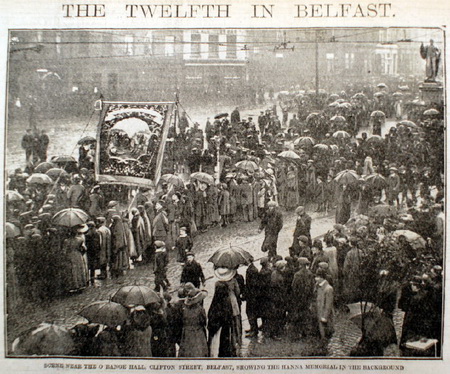
The events of 1872 show that nationalists were more than ready to utilise parading as a medium for displaying the strength of their community and the scale of support for their political aspirations. In the following years parading became a key feature in building and sustaining the initial momentum for Home Rule. However, like the campaign itself, the nationalist parading tradition fluctuated in its fortunes and it was not until the 1890s that it really flourished. St Patrick's Day parades continued to be held in many places but it was Lady's Day that became the more popular day for holding parades and larger political gatherings.
In 1816, 84% of the constabulary were Protestant but by 1880 they were 76% Catholic, although Protestants dominated the officer ranks. However, a commission of inquiry in 1864 found that the Belfast police force were both overwhelmingly Protestant and anti-Catholic. The government responded to the finding of the inquiry and replaced the Belfast police force with the Royal Irish Constabulary and by the 1880s membership of the force was in line with the population balance of
the town itself. Despite these various changes the police frequently found themselves accused of bias towards the other community in times of disturbance and frequently found itself in the front line at disputes over the right to parade.
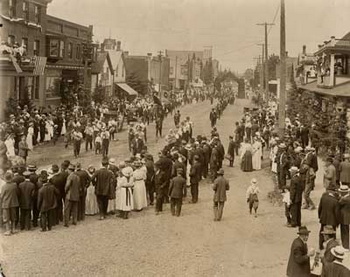 Lurgan and Portadown, were the scene of recurrent troubles and of a type which has resonances with the contemporary disputes. In Lurgan nationalist parades were an established feature of the social calendar. Two to three thousand people regularly paraded each August, while smaller parades were held in March. The parade followed an established route from the Shankill area via Edward Street to the townland of Montiagh and returned via Edward Street, Church Place and North Street before arriving at Milltown where a public meeting was held. This route restricted nationalists to the
clearly designated Catholic areas of the town and away from Protestant areas. But, there was still a flashpoint by the Church of Ireland at the junction of High Street, and in later years near William Street, where Protestants would gather to abuse, jeer and throw missiles at those walking. The police often had a hard job maintaining order but only rarely was the trouble as extensive as had been experienced in 1872. Lurgan and Portadown, were the scene of recurrent troubles and of a type which has resonances with the contemporary disputes. In Lurgan nationalist parades were an established feature of the social calendar. Two to three thousand people regularly paraded each August, while smaller parades were held in March. The parade followed an established route from the Shankill area via Edward Street to the townland of Montiagh and returned via Edward Street, Church Place and North Street before arriving at Milltown where a public meeting was held. This route restricted nationalists to the
clearly designated Catholic areas of the town and away from Protestant areas. But, there was still a flashpoint by the Church of Ireland at the junction of High Street, and in later years near William Street, where Protestants would gather to abuse, jeer and throw missiles at those walking. The police often had a hard job maintaining order but only rarely was the trouble as extensive as had been experienced in 1872.
The worst of the violence occurred in August 1879 when the police resorted to reading the Riot Act and then opened fire on the crowd after disturbances had broken out on the return parade.
On this occasion a young boy was shot and killed, and two other people were wounded in the trouble (NW 16.8.1879).
During the last few days people were assured that Lurgan was to be the scene of a "monster procession" on Lady Day, and that it was to be swelled by large contingents from Belfast, Portadown, and the entire surrounding district. Numerically these anticipations were very far from being realised; but the demonstration was attended with the most lamentable results, which are likely to be long remembered by the inhabitants of this town and neighbourhood. The sad events which occurred in the course of the day, and which have cast a gloom over the district, were not preceded by any circumstances calculated to give rise to serious forebodings, although outbreaks of a trivial character were not unlooked for. In case, however, matters should threaten to come to the worst, the authorities had taken all due precautions to suppress any ebullition of party feeling, and preserve the peace of the town. Two hundred extra police were imported into Lurgan. Of these fifty were detached for duty at Derryadd, and the remainder were kept in town. During the early part of the day nothing occurred to mar the general tranquillity, and the duties of the police appeared to be of the lightest description. The majority of the constabulary were stationed beside the railings which enclose the parish church, and many of them were congratulating themselves that everything was going to pass off peaceably. But for the presence of this large force of police and the crowds of people who assembled chiefly in the central part of the town there was little to denote that anything unusual was astir.
However, in the course of a few hours the general aspect of matters underwent a complete change, and the town became the theatre of disturbances the like of which fortunately have not been witnessed for many a long day. The programme of the Home Rule party consisted in marching from town to the Moyntaghs, where they were to be joined by some contingents. On returning to town again they were to proceed to Milltown, on the borders of Lough Neagh, where it was arranged to hold a meeting. Although there was a large turnout of the party their numbers did not attain the proportion which it had been foretold they would assume. The principal attempt, and, indeed almost the solitary one, at street decoration was in Edward Street, where an arch of evergreens, with significant emblems attached, had been erected. But little occurred worthy of remark in the early part of the day. A contingent from Portadown arrived by train at ten o'clock, and were accompanied by a flute band. There was some marching through the streets prior to setting out for the Moyntaghs, but no attempt was made to interfere in any way with the parties who were preparing to take part in the procession. Having at least formed into marching order, the procession passed from Shankill Street into Edward Street and out by the long plain to meet the contingent from the Moyntaghs. Everything was orderly and peaceable in town during their absence. Large numbers of people congregated in the principal streets to witness the arrival of the processionists in town. They returned about one o'clock, bearing several green banners, on some of which were conspicuously displayed the words, "Home Rule," and the majority of them wore green scarves. They were accompanied by two bands, and had a number of drums, which were operated upon in the most vigorous manner. Some idea of the extent of the procession may be formed when it is stated that it took about seven minutes to pass a given point.
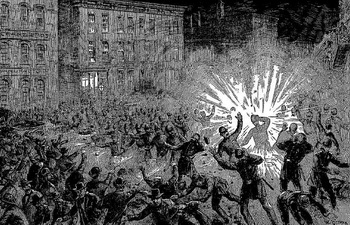 All passed off peaceably until the processionists reached North Street, when a most desperate place of rioting broke out in a moment, and without any premonitory symptoms that could have led to its anticipation. The processionists came into collision with some factory operatives who were assembled in North Street and the vicinity, and in an instant matters assumed the most threatening appearance. The police, under Captain Redmond, R.M., immediately interposed between the opposing parties, and exerted themselves in a very active manner to clear the street and quell the disturbance. In the meantime several hand-to-hand encounters had taken place between the combatants, but stones were soon afterwards resorted to. The stone-throwing was of the fiercest possible character, and several persons on the streets took refuge from the missiles in the adjoining shops. The police had a most difficult and perilous duty to perform. Having got between the parties, they endeavoured to the utmost of their power to restore order. The scene in North Street was one of the greatest confusion and excitement, and matters quickly reached a most painful climax. Showers of stones were discharged by the processionists at the police, many of whom were struck. Captain Redmond, who was in command, received several blows, and Head-Constable Henderson, of the local force, had the misfortune to be very dangerously wounded on the forehead by a large stone. Other members of the constabulary also received injuries of a more or less serious character. The processionists, in fact, appeared now to confine their attentions to the police, at whom they threw stones in the most vigorous and determined manner. The police followed on rapidly after the processionists, who continued as they retreated to harass the constabulary with stones. Orders were then given to the police to fix their bayonets, and, as the state of matters had now become most serious. Captain Redmond read the Riot Act. The police then received the command to fire upon the rioters, and about a dozen shots were discharged, a young lad named Furfey, whose parents reside in Kilmain Street, and who was standing about ten yards from the door of his father's house, being shot dead. The ball entered close above the right eye and emerged behind the ear, so that death must have been instantaneous. The sister of the unfortunate lad Catherine Furfey, was shot through the arm, and the wound bled profusely. A man of about 55 years of age, named John Smith, from Seapatrick, was shot in the right leg above the ankle. The blood flowed freely from the wound, and he was allowed to remain lying at the roadside where he fell for some time without receiving any attention. The wound was of the most dangerous character, and as he was not expected to recover a Roman Catholic clergyman was sent for and came and administered the last rites of the Church. A man named Henry McCavin had a remarkable escape from being shot dead, a ball grazing his cheek and passing through the lobe of his ear. The stone throwing immediately ceased after the firing, and the processionists proceeded to Milltown. All passed off peaceably until the processionists reached North Street, when a most desperate place of rioting broke out in a moment, and without any premonitory symptoms that could have led to its anticipation. The processionists came into collision with some factory operatives who were assembled in North Street and the vicinity, and in an instant matters assumed the most threatening appearance. The police, under Captain Redmond, R.M., immediately interposed between the opposing parties, and exerted themselves in a very active manner to clear the street and quell the disturbance. In the meantime several hand-to-hand encounters had taken place between the combatants, but stones were soon afterwards resorted to. The stone-throwing was of the fiercest possible character, and several persons on the streets took refuge from the missiles in the adjoining shops. The police had a most difficult and perilous duty to perform. Having got between the parties, they endeavoured to the utmost of their power to restore order. The scene in North Street was one of the greatest confusion and excitement, and matters quickly reached a most painful climax. Showers of stones were discharged by the processionists at the police, many of whom were struck. Captain Redmond, who was in command, received several blows, and Head-Constable Henderson, of the local force, had the misfortune to be very dangerously wounded on the forehead by a large stone. Other members of the constabulary also received injuries of a more or less serious character. The processionists, in fact, appeared now to confine their attentions to the police, at whom they threw stones in the most vigorous and determined manner. The police followed on rapidly after the processionists, who continued as they retreated to harass the constabulary with stones. Orders were then given to the police to fix their bayonets, and, as the state of matters had now become most serious. Captain Redmond read the Riot Act. The police then received the command to fire upon the rioters, and about a dozen shots were discharged, a young lad named Furfey, whose parents reside in Kilmain Street, and who was standing about ten yards from the door of his father's house, being shot dead. The ball entered close above the right eye and emerged behind the ear, so that death must have been instantaneous. The sister of the unfortunate lad Catherine Furfey, was shot through the arm, and the wound bled profusely. A man of about 55 years of age, named John Smith, from Seapatrick, was shot in the right leg above the ankle. The blood flowed freely from the wound, and he was allowed to remain lying at the roadside where he fell for some time without receiving any attention. The wound was of the most dangerous character, and as he was not expected to recover a Roman Catholic clergyman was sent for and came and administered the last rites of the Church. A man named Henry McCavin had a remarkable escape from being shot dead, a ball grazing his cheek and passing through the lobe of his ear. The stone throwing immediately ceased after the firing, and the processionists proceeded to Milltown.
 The news of the tragic occurrences spread with the greatest rapidity over Lurgan, and created considerable excitement. The riot, fierce as it was, and attended with such deplorable results, took many by surprise by the celerity with which it progressed through its several stages, lasting only a few minutes. The body of the deceased was removed to the house of his parents, where it awaits an inquest. Smith was subsequently conveyed to the grounds of the Roman Catholic chapel, where his wounds were dressed by Dr. Gribbon, but on being taken at a later period to the union hospital amputation was found to be necessary. He is in a most dangerous condition, and his recovery is regarded as almost hopeless. During the disturbances the rioters wrecked one of Lord Lurgan's gate lodges and the home of Mr. McClinton, a Protestant. Besides Captain Redmond, R.M., of Dungarvan; Captain Peel, R.M., Letterkenny; County Inspector Ramsbottom, and Sub-Inspectors Fulton (King's County), Barry (Leitrim), and H. B. Lynch (Roscommon) were on special duty for the occasion. After the firing the procession marched to the place of rendezvous on the shores of Lough Neagh. Upon arriving at the residence of Mr. Campbell a meeting assembled, when the chair was taken after some delay by Mr. John McCombe, who condemned the conduct of the magistrates and police in firing on, as he said, an unoffending crowd. Two resolutions were proposed, one of which condemned the conduct of the police in firing on the processionists, and called for a searching inquiry to be held into the circumstances. (BNL 16.8.1879). The news of the tragic occurrences spread with the greatest rapidity over Lurgan, and created considerable excitement. The riot, fierce as it was, and attended with such deplorable results, took many by surprise by the celerity with which it progressed through its several stages, lasting only a few minutes. The body of the deceased was removed to the house of his parents, where it awaits an inquest. Smith was subsequently conveyed to the grounds of the Roman Catholic chapel, where his wounds were dressed by Dr. Gribbon, but on being taken at a later period to the union hospital amputation was found to be necessary. He is in a most dangerous condition, and his recovery is regarded as almost hopeless. During the disturbances the rioters wrecked one of Lord Lurgan's gate lodges and the home of Mr. McClinton, a Protestant. Besides Captain Redmond, R.M., of Dungarvan; Captain Peel, R.M., Letterkenny; County Inspector Ramsbottom, and Sub-Inspectors Fulton (King's County), Barry (Leitrim), and H. B. Lynch (Roscommon) were on special duty for the occasion. After the firing the procession marched to the place of rendezvous on the shores of Lough Neagh. Upon arriving at the residence of Mr. Campbell a meeting assembled, when the chair was taken after some delay by Mr. John McCombe, who condemned the conduct of the magistrates and police in firing on, as he said, an unoffending crowd. Two resolutions were proposed, one of which condemned the conduct of the police in firing on the processionists, and called for a searching inquiry to be held into the circumstances. (BNL 16.8.1879).
On 19.6.1879 the BNL reported: There has been no repetition of the disgraceful scenes which characterised Saturday evening, when numbers of houses were wrecked and much property destroyed. Last night passed over quietly, nothing save the gossip of past occurrences leading one to imagine that such a dreadful history was chronicled during the past three days. If we except the rowdy doings of the period referred to, there is but little active employment occupying the attentions of a portion of the people, who seem now bent upon a meaningless holiday, with serious motives in view rather than pursuing those habits of industry and perseverance which in times, gone by have raised Lurgan to its present position. Several portions of this thriving little town present a somewhat saddening appearance today, the hand of destruction being only too visible, and besides the houses of several of the well-to-do inhabitants suffering, there have others been made the object of attention, upon which it might be said in truth the violence of any mob was ill-spent. Riot and the deeds of rioters are eagerly discussed in the streets, while the localities which have now, unfortunately, earned for themselves a reputation form a field of observation and of melancholy interest.
The man Smyth, who has often been referred to since the dreadful tragedy of Friday, still remains in hospital, and although be necessarily remains in a weak condition, yet the danger of fatal consequences is not more threatening than when last spoken of. he receives the utmost care, but, owing to the nature of his sufferings, and the fact, as reported, that he takes but little nourishment, his recovery, if even possible, will be a work of time and of the tenderest nursing. Rowan, who by some means lost a hand on Saturday evening, and subsequently a portion of the forearm, lies in a somewhat critical state, being threatened with tetanus. It is currently rumoured this evening that he has sworn an information against some party whom he alleges to be the occasion of the loss which he sustained. This charge, however, does not tally with a prevalent supposition, by which it would appear that there was no second party connected with the lamentable occurrence, but that he played the sole part himself, and accidentally suffered for so doing. This is a matter of pure conjecture, as no definite information can be obtained of how he lost his hand.
The disturbed localities are receiving more than ordinary attention from the constabulary, who yet remain in their full number, and are constantly on duty throughout the night. Edward Street, the battle-ground between the contending factions, comes in for a large share of attention, and in order to prevent collisions as much as possible a temporary barrack has been provided in the district, in which a large body of men are continually posted. It is now in circulation that an effigy is to be burned this evening by the Roman Catholic party; but up to an advanced hour the intention had not been verified. Several informations have been sworn this afternoon, and some arrests made. Those charged with an infringement of the law will be brought before the court of petty sessions, which opens to-morrow morning.
The special feature of interest in the town to-day was the inquest, reported above. The court was densely crowded during the inquiry, and previous to the verdict becoming known the excitement throughout was intense. From 25 to 30 persons have sworn the usual preliminary informations regarding the malicious injuries done to their property to enable them to apply for compensation at the next presentment sessions.
The report of the commissioners into the affair did not conclusively lay blame for the incident on one side or the other. They noted that:
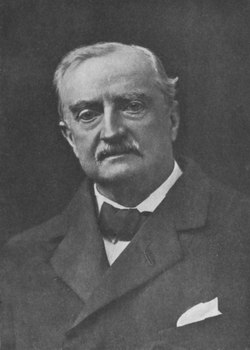 The town of Lurgan which, about thirty years ago, was the sixty-seventh town in Ireland, is now about the nineteenth town in size in Ireland. It contained by the last census 10,000 inhabitants, of whom 4,712 were Church of Ireland Protestants, 4,600 Roman Catholics, and the remainder Protestants belonging to the Presbyterian and other religious denominations. Like some other towns in Ulster, Lurgan contains a Protestant and Roman Catholic quarter, a distinction which it would be very desirable should cease to exist. The former consists principally of Hill Street and Union Street, and the latter of Shankill Street and some minor streets adjoining. Edward Street is the common approach to both these districts from the main or principal part of the town, and is itself inhabited by a mixed community of Catholics and Protestants. Although any intrusion of residence of persons of a different persuasion is resisted by the inhabitants of these exclusive localities, the Protestants and Roman Catholics appear to live on the most amicable terms with each other, except on the occasion of certain anniversaries – namely, the 17th March (St. Patrick's Day), the Twelfth of July, the 15th of August (the Festival of the Assumption), and a few days about the time of each of these several anniversaries. The Protestants, and notably the Orange party, in the town have been in the habit for a long time back of celebrating the 12th of July by marching in procession with orange sashes, banners, drums, fifes, &c.; and it has also been their habit to decorate the exterior of the Protestant Episcopalian Church upon that day. The Roman Catholics since the Party Processions Act ceased to be law have been in the habit of marching in procession upon the other two days above mentioned, but although both these days – namely, the 17th of March and 15th of August – are celebrated as festivals in the Roman Catholic Church, the processions referred to have not any religious significance or sanction whatever. On the contrary, they are as far as possible discountenanced and discouraged by the Roman Catholic clergy of the parish, and there can be no doubt that they are meant as a sort of set-off of the Orange displays that take place upon the 12th and also occasionally on the 1st of July. The town of Lurgan which, about thirty years ago, was the sixty-seventh town in Ireland, is now about the nineteenth town in size in Ireland. It contained by the last census 10,000 inhabitants, of whom 4,712 were Church of Ireland Protestants, 4,600 Roman Catholics, and the remainder Protestants belonging to the Presbyterian and other religious denominations. Like some other towns in Ulster, Lurgan contains a Protestant and Roman Catholic quarter, a distinction which it would be very desirable should cease to exist. The former consists principally of Hill Street and Union Street, and the latter of Shankill Street and some minor streets adjoining. Edward Street is the common approach to both these districts from the main or principal part of the town, and is itself inhabited by a mixed community of Catholics and Protestants. Although any intrusion of residence of persons of a different persuasion is resisted by the inhabitants of these exclusive localities, the Protestants and Roman Catholics appear to live on the most amicable terms with each other, except on the occasion of certain anniversaries – namely, the 17th March (St. Patrick's Day), the Twelfth of July, the 15th of August (the Festival of the Assumption), and a few days about the time of each of these several anniversaries. The Protestants, and notably the Orange party, in the town have been in the habit for a long time back of celebrating the 12th of July by marching in procession with orange sashes, banners, drums, fifes, &c.; and it has also been their habit to decorate the exterior of the Protestant Episcopalian Church upon that day. The Roman Catholics since the Party Processions Act ceased to be law have been in the habit of marching in procession upon the other two days above mentioned, but although both these days – namely, the 17th of March and 15th of August – are celebrated as festivals in the Roman Catholic Church, the processions referred to have not any religious significance or sanction whatever. On the contrary, they are as far as possible discountenanced and discouraged by the Roman Catholic clergy of the parish, and there can be no doubt that they are meant as a sort of set-off of the Orange displays that take place upon the 12th and also occasionally on the 1st of July.
They ended their report by saying: We cannot conclude without giving regret that a town ordinarily so thriving and well-ordered as Lurgan, and a people so industrious, should be periodically disturbed by processions and party displays on both sides, which lead to contention, discord, and animosity, and too frequently terminate, as in the present instances, in a lamentable loss of human life, and the destruction of property. And in conclusion, we desire to say that our inquiry was greatly facilitated by the manner in which the professional gentlemen concerned discharged the duties which devolved upon them. Some charges were made against individuals, which, as the investigation proceeded, turned out to be without foundation, and when they proved to be groundless, were in almost every instance withdrawn. The proceedings were carried on with good temper and good feeling, and all parties however much they differed upon various questions, seemed sincerely anxious for the future peace and welfare of the town of Lurgan and its inhabitants.
However, this was not be the last time that disturbances occurred. Rioting also broke out in March 1885 and again in August 1886, but after that any disturbances seem to have been minor scuffles.
Protestant objections to the displays of support for Home Rule were often the precipitant cause of the trouble, but nationalists were not slow to respond to abuse with violence of their own. In fact, the rioting in 1886 involved nationalist crowds attacking the police and occurred in the absence of any formal parade that year (NW 17.8.1886).
In Lurgan the disputes largely centred on the issue of where nationalist parades should go, they were excluded from the main commercial area of the town. But certainly by the 1890s nationalist parades were more widely accepted, or at least they were more readily ignored by Protestants. In contrast there is no indication that nationalist parades or displays were ever tolerated in Portadown. Nationalists in Lurgan could erect green arches in the Edward Street area, but the only time such an act was reported in the Tunnel area of Portadown, in 1880, rioting broke out (NW 16.3.1880).
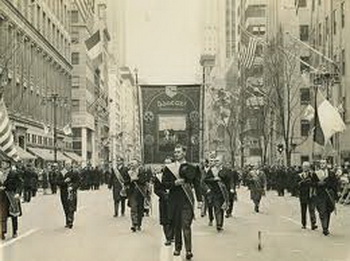 Nationalists in the town were forced to join processions elsewhere if they wanted to parade their support for the Home Rule cause. Usually residents from the Tunnel area joined their compatriots in Lurgan, but even then they did not necessarily escape the antagonism of local Protestants, who would wait for their return in the evening and then attack them. In August 1880 and again in March
1885 more serious action was taken, the Tunnel area was blockaded and the local band stopped from leaving the area by Protestant bands who paraded the streets through the day (NW 17.8.1880, 18.3.1885). As with Lurgan, by the 1890s violent assaults on nationalists at anniversary days had largely ceased, although there was still no suggestion that nationalists should have the right to parade in the town. Portadown remained the Orange Citadel. Nationalists in the town were forced to join processions elsewhere if they wanted to parade their support for the Home Rule cause. Usually residents from the Tunnel area joined their compatriots in Lurgan, but even then they did not necessarily escape the antagonism of local Protestants, who would wait for their return in the evening and then attack them. In August 1880 and again in March
1885 more serious action was taken, the Tunnel area was blockaded and the local band stopped from leaving the area by Protestant bands who paraded the streets through the day (NW 17.8.1880, 18.3.1885). As with Lurgan, by the 1890s violent assaults on nationalists at anniversary days had largely ceased, although there was still no suggestion that nationalists should have the right to parade in the town. Portadown remained the Orange Citadel.
These examples of Lurgan and Portadown suggest that the current objections to the rights of the nationalist community to parade in the centre of the towns is not simply a response to the violence of the IRA. Portadown, and to a lesser extent Lurgan, were, and are, regarded as Protestant towns. Public expressions of nationalist identity were not welcome, and in these two cases the demographic dominance of the Protestants made sure that Catholics were kept in their place. While the police were prepared to maintain the limited rights of Home Rule supporters in Lurgan they were not prepared or able to extend them to equal the rights afforded to the Orangemen, in Portadown nationalists appear to have had few rights. It would almost seem to be a tradition that nationalists have been denied the same rights to parade in support of their cause as Orangemen.


|

